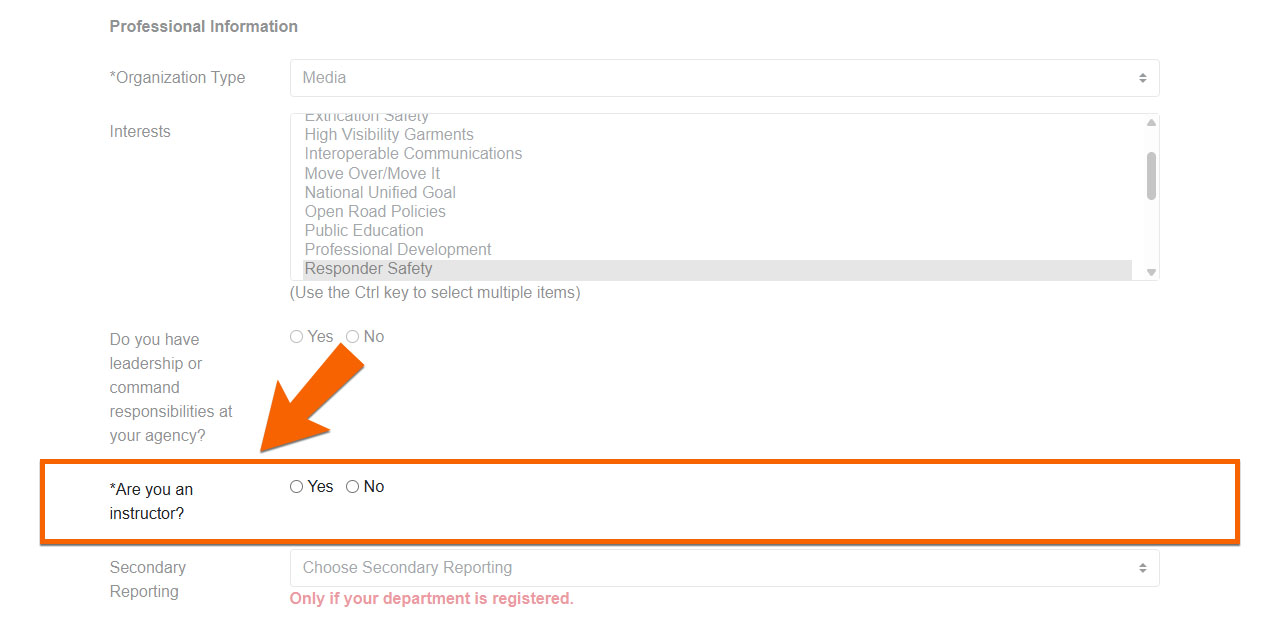Responder Safety Learning Network New Instructor Mode Feature Empowers Instructors to Use Modules in their Classes
Bring traffic incident management and responder safety recommended practices directly to your students in class.
ResponderSafety.com has launched Instructor Mode on the Responder Safety Learning Network (RSLN), a new feature that allows instructors to use RSLN modules during in-class instruction and then authorize their class attendees to take the module’s Skills Challenge test to earn their Certificate of Completion without having to watch the module’s lesson videos again. Instructor Mode encourages instructors to integrate RSLN module videos into their classroom instruction to teach key concepts, spark discussion, and support breakout groups.
To access Instructor Mode, RSLN registered users must complete three steps:

- Go to their RSLN User Profile and answer “Yes” to the question “Are you an instructor?”
- Once approved to access Instructor Mode, the Instructor must first pass a module’s Skills Challenge test before Instructor Mode becomes available for that module.
- Once the instructor has passed the Skills Challenge test for a module, a button titled “Enable Instructor Mode” appears on the module’s details page to active Instructor Mode. Click that button to activate Instructor Mode.

Once Instructor Mode is enabled for a module, click Launch Program to open the module. The module interface is now badged with “Instructor Mode” and has a new button called “Instructor Features.”
The instructor can freely show any of the module’s sections to their class in any order and step through the Knowledge Checks to use them for class discussion. Instructors can also access the Resources accompanying the module to extend the learning.

The Instructor Features button in the module navigation bar allows the instructor to authorize students by email address to complete the module without having to watch all the lesson videos again or take the Knowledge Checks, enabling class attendees to skip directly to the Skills Challenge test and take it to earn their Certificate of Completion. Once the Instructor has authorized the student to skip to the Skills Challenge to complete a module, the student receives an email notification that prompts them to take the test.
The network tracks the status of each student so the instructor can see if they have registered with RSLN, started, and completed the module. This process is done on a module by module basis; students are authorized for a particular module. The student list for one module does not carry over to another module. Students can be authorized by uploading a spreadsheet of their email addresses or entering them one-by-one. Full details on how to use Instructor Features are in the Instructor Guide the Instructor gets access to once they have been approved.
Instructor Mode can be deactivated at any time using the “Disable Instructor Mode” button on the module’s details page. Instructor Mode must be disabled to refresh a module’s certificate completion date. After refresh, Instructor Mode can be enabled again.
Use the Support form to let us know what you think of this new feature and how you have used Instructor Mode with your classes.
News Archive